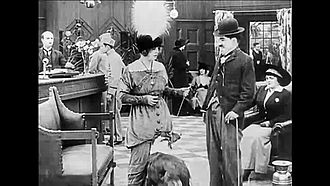There are countless filmmakers that contributed to the growth of Cinema, but no one does it like Charlie Chaplin. After starting as a vaudeville performer, Chaplin had turned his sight toward filmmaking during the silent era. Since then, he has effectively become one of the first movie stars in the history of Cinema. However, his contribution to what would become the star system was not the only thing that Charlie Chaplin had done to change the film industry.
In this article, we are going to talk about cinematic history and how it had changed since the time of Charlie Chaplin. With that, grab your popcorns, set up your projectors, and get ready to delve into the silent era years.
The comedy of silent eras was, in fact, full of sight gags, pratfalls, and some of the most classic schtick. Cinema icons like Harold Lloyd and Buster Keaton have built their careers upon these types of comedies. When identifying film connections, some had been plausibly pronounced than others. In the genre of film comedy, Keaton used the method of demonstrating the things that would happen to him in the universe and refashioning it into a comical form. Another contender, Harold Lloyd, has an unpredictable comedy style at first. His style had always been remembered as sweet and emotional executed in an engaging gag.
However, where Chaplin differs from Keaton and Lloyd is that how his brand of comedies affects the audience on a psychological level. Although created accidentally, his most iconic character has been “The Tramp,” a gentle-hearted, bubbly, and child-like character. He can be seen wearing abnormally sized large pants, a bowler hat, a tight coat, large pair of shoes, a mustache, and a flexible cane. Alongside that, the Tramp has been portrayed as homeless yet a gentleman despite his status in society. However, he is also cunning in order to get what he needs in life to survive or to escape the authority who does not tolerate his antics.
Although there are several theories from philosophers like Mikhail Bakhtin and Sigmund Freud, the one that makes sense within the silent era’s slapstick comedy is that of the philosopher named Thomas Hobbes. His superiority theory, which also traces back to the philosophy of Plato and Aristotle, had suggested that humans take delight in other people’s misfortune to feel superior. For this reason, we laugh when a big, buff guy falls in front of his date because he’s muscly and we are not. We laugh at the police, who had accidentally cuffed himself to something because he has power, and we have not. (That’s pretty much how it works.)
But, in this case, Charlie Chaplin’s ‘The Tramp’ has not been like what Hobbes mentioned in his theory. Instead, Chaplin incorporated his own tragedy into a comedy. The audience laughs because they relate to his suffering. Consequently, this theory has been proven by a Harvard professor named George Eman Vaillant. According to Vaillant, the laughter which the audience projected while watching such films is a defense mechanism that allows people to think and talk about unpleasant and painful things. Moreover, the way Chaplin had linked his suffering to the comedies gave the audiences someone who could identify with as they struggle the Great Depression during that time.
Chaplin’s comedic explorations into the condition of humans had inarguably transformed the Cinema, most importantly, the comedies. It had transitioned from a novelty to an art form since it addresses the real issue with the portrayal of dimensional characters in a way that made the audiences easily talk about them. In other words, the Tramp character might have been funny because of his tiny jacket and big shoes, but the character becomes great because it portrays a character that is too impoverished to afford anything. Such a case made something that the audiences at that time could genuinely understand. This is probably why Chaplin’s most famous quote has been more poignant than ever: “Life’s a tragedy when seen up close, but a comedy in long-shot.”


